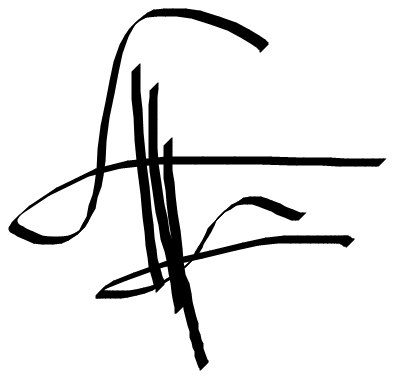Introduction
The keyword-rich education landscape increasingly favors innovative teaching methodologies. One standout approach is the Circle Inside and Circle Outside method, particularly when merged with Problem-Based Learning (PBL) and Project-Based Learning (PjBL). This hybrid instructional design is especially effective for Grade 3 students, who are transitioning from learning basic concepts to understanding how to apply knowledge in real-life situations.
In this comprehensive article, we will explore how the Circle Inside and Circle Outside method can be integrated with PBL and PjBL to create a vibrant and effective learning environment. From lesson design to student engagement and classroom outcomes, we’ll guide you through a 360-degree view of this powerful teaching approach.
Understanding the Circle Inside and Circle Outside Method
The Circle Inside and Circle Outside (CICO) method is a form of structured peer learning. It involves arranging students in two concentric circles:
- The inner circle engages in active discussion or problem-solving.
- The outer circle listens attentively, provides feedback, and observes behavior.
After a fixed period, roles are reversed, ensuring all students participate actively in both listening and speaking roles. This structure is ideal for developing communication skills, empathy, and active listening—critical attributes in modern education.
What is Problem-Based Learning (PBL)?
Problem-Based Learning is a student-centered pedagogy where students learn by solving real-world problems. In this approach:
- Teachers act as facilitators, not lecturers.
- Students work collaboratively to explore a complex question.
- Inquiry, critical thinking, and self-directed learning are emphasized.
PBL motivates learners to take ownership of their learning journey and apply academic knowledge to practical challenges.
What is Project-Based Learning (PjBL)?
While similar to PBL, Project-Based Learning emphasizes the creation of a product or presentation that reflects the students' understanding of a topic. Key features include:
- Long-term projects with multiple phases
- Real-world relevance
- Integration of various subject areas (math, science, language, art)
When implemented effectively, PjBL encourages creativity, accountability, and time management in students.
Why Use These Methods in Grade 3?
Third-grade students are at a crucial cognitive stage where they begin to understand abstract concepts and enjoy teamwork. By Grade 3, students are capable of:
- Identifying patterns and solving basic problems
- Expressing opinions and reasoning
- Collaborating in group settings
Integrating CICO with PBL and PjBL creates a robust structure for fostering these capabilities.
Classroom Scenario: Waste Management Project
Let’s examine a practical classroom scenario that illustrates the combined use of these methods:
Title: "Reducing Waste in Our Classroom"
Step 1: Problem Identification (PBL)
- The class is introduced to the problem: "Why do we generate so much classroom waste?"
- Students are divided into inner and outer circles.
- The inner circle discusses possible causes and effects.
- The outer circle takes notes and prepares to switch roles.
Step 2: Role Switching and Deeper Analysis
- After 10 minutes, roles are reversed.
- New ideas and alternative viewpoints are discussed.
Step 3: Project Planning (PjBL)
- Based on the discussion, students brainstorm a waste-reduction campaign.
- Tasks are assigned: creating posters, designing recycling bins, and planning awareness events.
Step 4: Implementation and Presentation
- Over two weeks, students execute their project.
- Progress is shared using CICO for daily reflections.
Step 5: Evaluation and Feedback
- The class evaluates the impact of their efforts.
- Teachers and peers provide constructive feedback using the outer circle format.
Assessment and Learning Outcomes
Using rubrics aligned with CICO, PBL, and PjBL, teachers can assess:
- Communication and active listening
- Teamwork and collaboration
- Creativity and innovation
- Problem-solving ability
- Project execution and time management
Student self-reflection and peer assessment also play an important role in reinforcing learning objectives.
Teacher Tips for Effective Implementation
- Start Small: Introduce one method at a time before combining all three.
- Use Visual Aids: Provide sentence starters and visual prompts for younger learners.
- Set Clear Guidelines: Define expectations for participation and respect.
- Incorporate Technology: Use digital tools for project planning and presentations.
- Celebrate Success: Acknowledge achievements with classroom displays or certificates.
Challenges and How to Overcome Them
While highly effective, these methods can present challenges:
- Time Constraints: Start with mini-projects that fit within a single week.
- Uneven Participation: Use rotating roles and structured turn-taking.
- Assessment Complexity: Develop simple rubrics with clear criteria.
- Classroom Management: Practice procedures and transitions in advance.
Conclusion
The Circle Inside and Circle Outside method, when combined with Problem-Based Learning and Project-Based Learning, offers a transformative approach to teaching Grade 3 students. It nurtures critical 21st-century skills such as collaboration, critical thinking, creativity, and communication.
By applying this method thoughtfully and consistently, educators can create an engaging and meaningful classroom experience where students don’t just learn—they lead their own learning journey.

.jpg)
.jpg)
.jpg)
.jpg)







